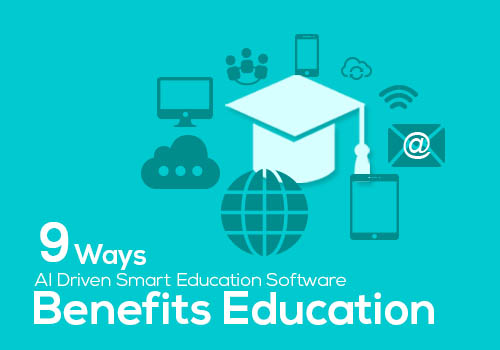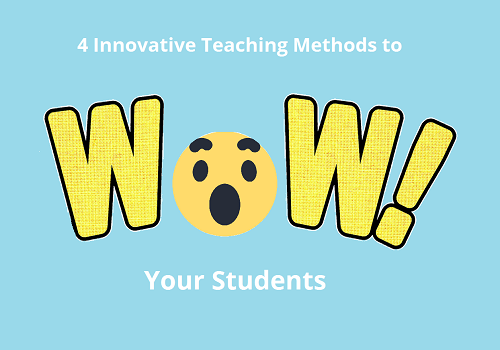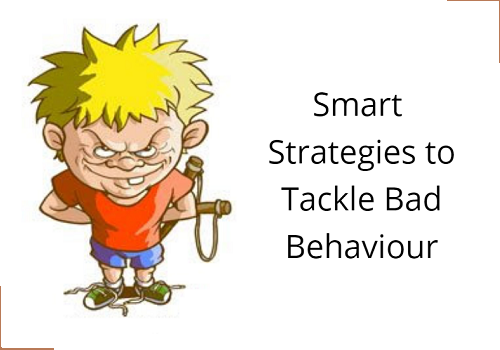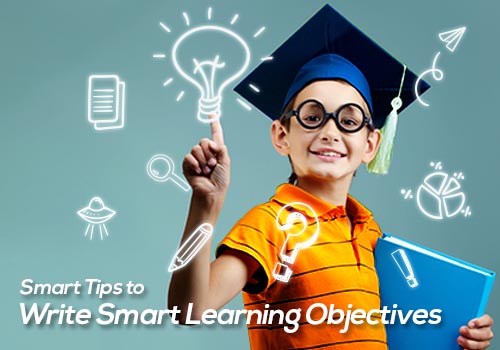Artificial Intelligence (AI) is sure to make big changes in the education sector. It is clear that over the last decade, Artificial Intelligence driven smart education software applications have addressed several challenges of learning such as language processing, reasoning, planning, and cognitive modeling.
Though the introduction of smart devices such as interactive whiteboards and tablets have influenced how subjects were taught in a more engaging manner, there is something more that AI can contribute to this sector, thus enhancing teaching and learning opportunities even further. Also there are several projects already in the works that use computer intelligence to help students and teachers get more out of the educational experience.
Here are 9 ways, where AI driven smart education software can benefit the education industry
Must Read: 4 Innovative Teaching Methods to “WOW” Your Students
1. Facilitates More Personalized Learning
While focusing on standard courses and lessons that students should study, it is also important to know how a student learns. Advances in Artificial Intelligence such as lesson planning software are providing teachers with a better understanding of how their students learn and is allowing them to customize the curriculum accordingly.
2. Helps Improve Teaching
Innovative smart education software can help teachers improve their job as well. Artificial Intelligence teaching software can identify areas where students are weak and focus on that area. Unlike traditional paper materials that need correction and re-print, most advanced online systems that are available in this digital era can actually generate better material. They can also offer more comprehensive testing than typical classroom curriculum.
3. Automates Basic Activities including Grading
School as well as college grading consumes a lot of time for teachers and students. However, AI is getting very close to human grading and would soon act as a relief for the community. Teachers can now choose to automate this grading process and thus save time for student interaction, class preparation as well as for career development. In the coming years, essay-grading software will be common, which allow teaching professionals to focus more on in-class activities and student interaction than grading.
4. Makes Adaptive Learning Possible
Higher levels of individualized learning via AI driven software is always a concern in kindergarten as well as graduate schools. It is expected that several adaptive learning programs, games, and software are on its way to assist students in adaptive learning. These reliable systems are designed to meet the needs of the student in their way of learning such as – greater importance on tough topics, repetition of lessons that students haven’t learned, thus helping students to work at their own speed.
You May Also Like: 7 Awesome Creative Classroom Ideas
5. Enables Support from AI Tutors
Several highly qualified AI tutors are now available 24/7 that help students to master specific subjects. Though these tutoring systems still cannot beat real-world teachers, with advancements in technology more advanced solutions will soon be a reality.
6. Helpful Feedback for Students and Educators
Along with helping teachers and students with their courses, AI systems can also provide feedback that will benefit for a successful course. Many developing schools are also using these tools to check students' progress in learning and teachers can also use them to check the areas where they should improve instructions for students.
7. A New Way to Find and Use Information
While the advanced technologies including Google or Siri provides results based on user needs and preferences, AI systems will also change the way information is searched for and found in schools and colleges. With more integrated technology in AI, future students may have vastly different experiences in doing research and looking up facts than the students of today.
8. Reduces Trial and Error in Learning
Most students do not like to be on the spotlight or even considered as a failure. This will impact their confidence as well. An intelligent AI student’s learning system is an ideal way to deal with trial and error. These technical solutions will offer students a way to experiment and learn in a relatively judgment-free environment. Also AI tutors will help them to improve a lot.
9. Makes Education something Entirely Different
The long-accepted reality behind the AI driven software in education sector is that this system has the potential to completely even the concept of education that exists today. With AI systems and software, students can –
- Learn from anywhere in the world at any time
- Get familiar with basic skills
- Benefit from a wider range of services in future



